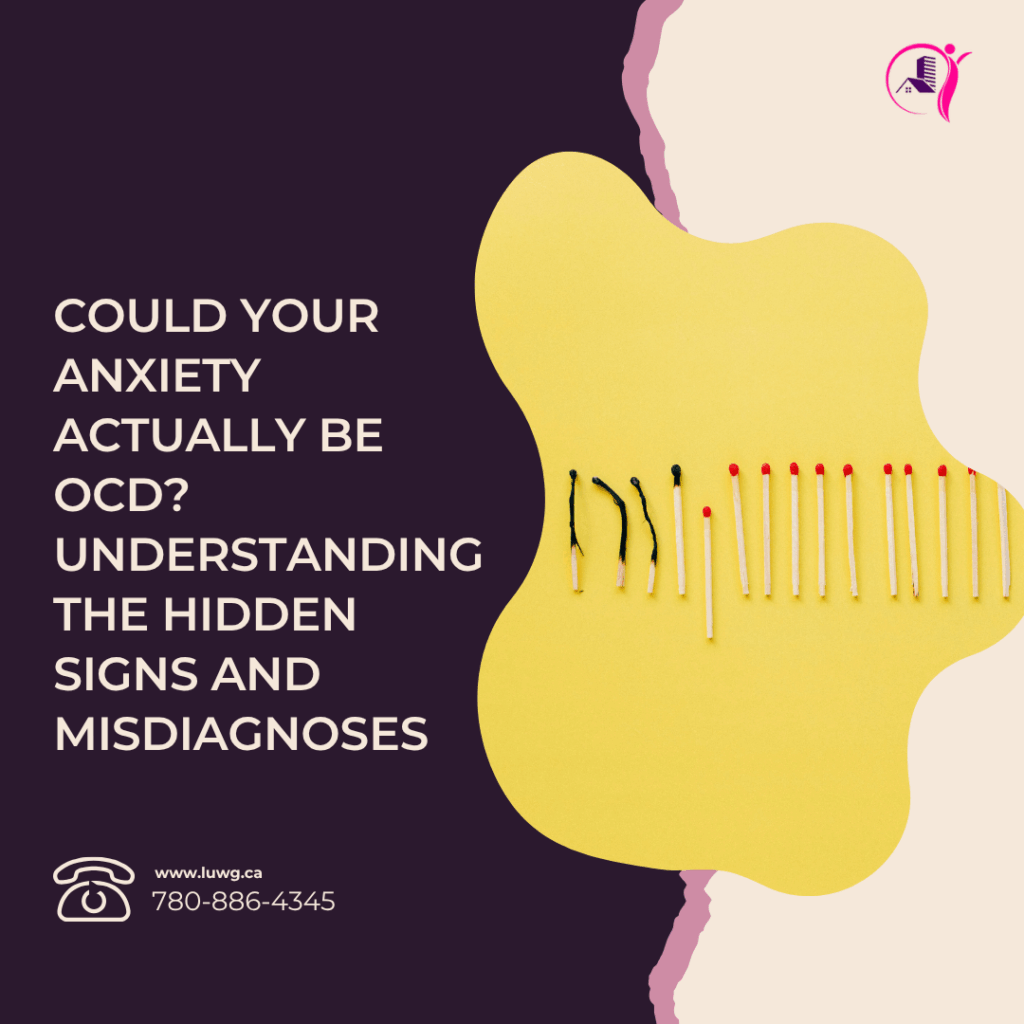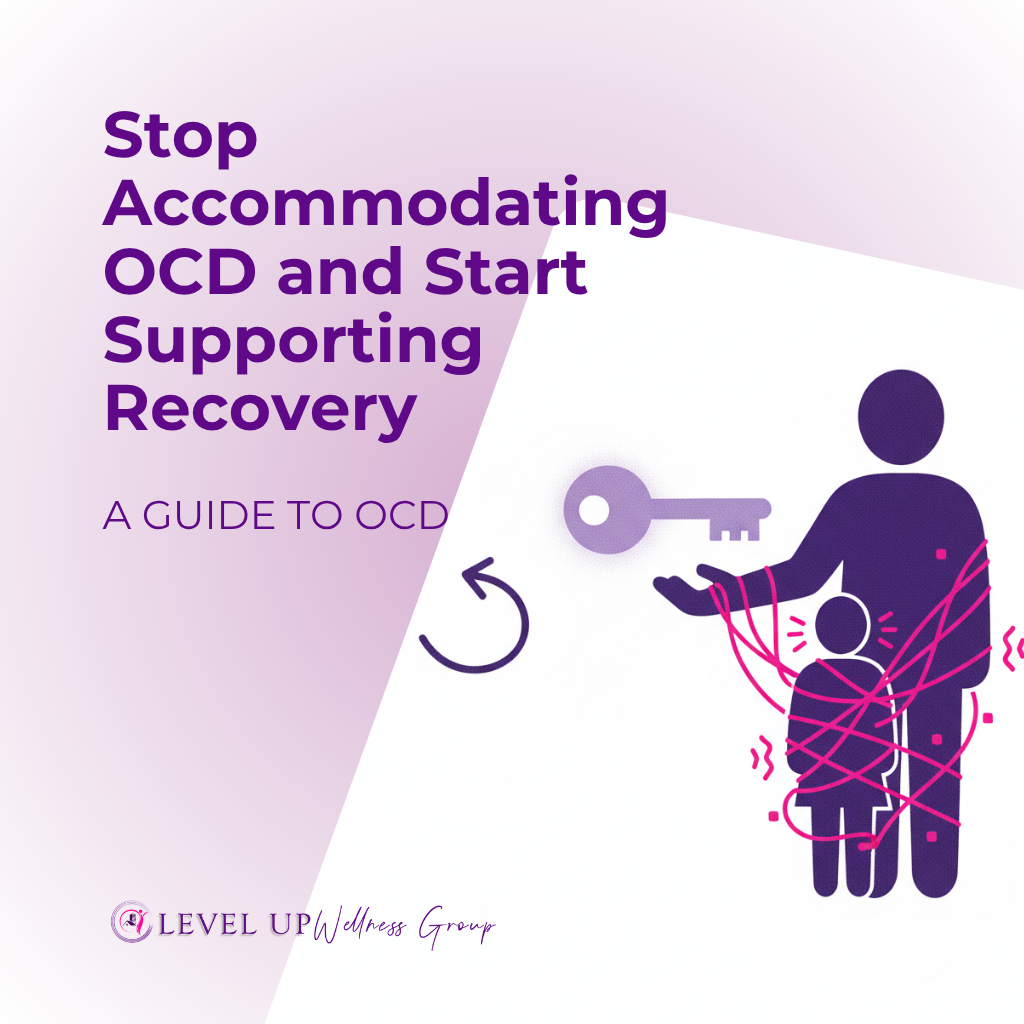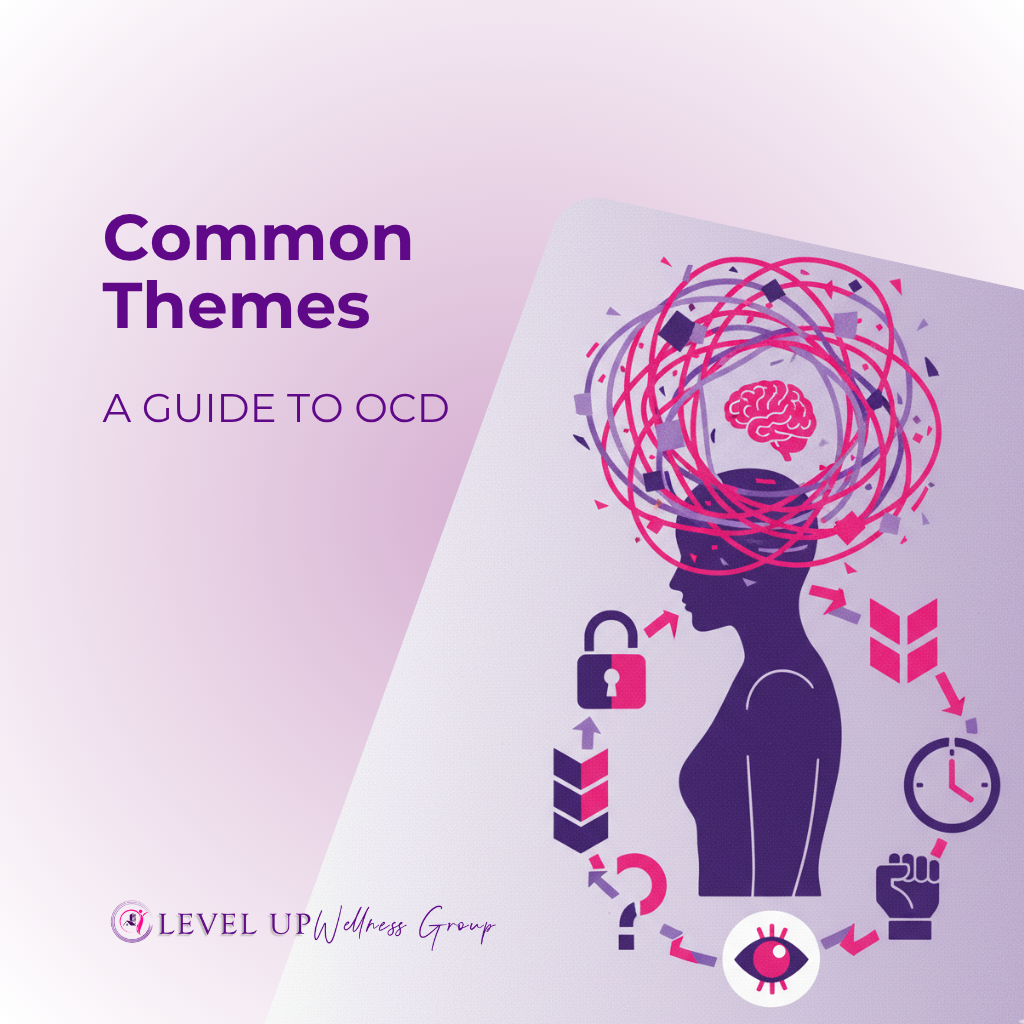
Anxiety is something almost everyone experiences at some point. Stress over work, relationships, or life responsibilities is normal. However, for some people, what appears to be anxiety may actually be Obsessive-Compulsive Disorder (OCD).
OCD is one of the most misdiagnosed and misunderstood mental health conditions, leading many people to receive the wrong treatments for years. Because OCD and anxiety disorders share similarities, many individuals are incorrectly diagnosed with Generalized Anxiety Disorder (GAD) or depression when their symptoms are actually driven by OCD. This misdiagnosis often results in ineffective treatments, which can cause increased suffering, distress, and even suicidal thoughts.
This article aims to explain the differences between OCD and anxiety disorders, explore various OCD subtypes—including harm and taboo themes—and discuss how OCD manifests across different life stages, including perinatal periods in both men and women. Additionally, we’ll examine the importance of reassessing anxiety treatments that may not be effective, as they could indicate the presence of undiagnosed OCD. Helping you understand the differences between OCD and anxiety disorders, introduce various OCD subtypes, explain how OCD manifests at different life stages, and discuss why misdiagnosis is so common and dangerous will help you to advocate for the correct treatment.
OCD vs. Generalized Anxiety Disorder (GAD): The Critical Differences
People can have anxiety and OCD at the same time.
OCD and GAD both involve high levels of anxiety, but they operate in very different ways. While OCD and anxiety disorders share overlapping features, key distinctions exist between the two. Anxiety disorders are typically characterized by excessive worry about real-life concerns, such as health, finances, or relationships. In contrast, OCD involves intrusive, unwanted thoughts (obsessions) that lead to repetitive behaviors or mental acts (compulsions) aimed at reducing the distress caused by these obsessions. For instance, a person with Generalized Anxiety Disorder (GAD) may worry excessively about daily responsibilities. In contrast, someone with OCD might experience persistent fears of causing harm, leading them to engage in compulsive checking behaviors.
Unlike generalized worry, OCD-related anxiety is often focused on irrational fears, such as “What if I ran someone over without realizing it?” (Harm OCD) or “What if I suddenly shout offensive words in church?” (Taboo OCD). These thoughts lead to compulsive behaviors that attempt to reduce uncertainty or prevent imagined consequences.
Many people with OCD recognize that their fears are irrational, but this recognition does not stop the anxiety—and that’s a defining difference from generalized anxiety.
People with GAD experience excessive, persistent worry about real-life concerns, such as work, finances, or relationships. While these worries can be overwhelming, they are usually grounded in reality. For example, someone with GAD may worry about failing an important work project, leading them to double-check their work multiple times.
In contrast, OCD is driven by intrusive, irrational thoughts (obsessions) that cause severe distress. These thoughts lead to compulsive behaviors or mental rituals, which serve as temporary relief from the anxiety. However, the more compulsions a person performs, the stronger the OCD cycle becomes.
- For example: Health Related Concerns: Worry About Your Health.
Obsessions (Intrusive Thoughts) in Health-Related OCD:
- Fear of having a serious illness (cancer, HIV, brain tumor) despite no medical evidence.
- Fear of contamination from germs, leading to sickness.
- Doubts about whether symptoms have been checked properly.
- Fear of accidentally spreading an illness to others.
Compulsions (Repetitive Behaviors) in Health-Related OCD:
Instead of just worrying, like in GAD, the person with OCD would perform rituals or repetitive actions to manage the anxiety. Here are some examples:
- Excessive Checking:
- Checking the body for lumps, bruises, or unusual marks multiple times per day.
- Repeatedly measuring their temperature, blood pressure, or heart rate.
- Compulsive Doctor Visits and Tests:
- Unlike GAD, where doctor visits might be frequent but spaced out, a person with OCD might go repeatedly in a short period of time or demand unnecessary medical tests.
- Seeking multiple opinions even when reassured by previous doctors.
- Compulsive Internet Research (“Cyberchondria”)
- Spending hours daily researching symptoms and diseases.
- Checking medical websites compulsively, often leading to more anxiety.
- Reassurance Seeking:
- Asking family or friends the same health-related question multiple times (“Do you think this mole looks different? Are you sure I don’t have cancer?”).
- Recording conversations with doctors to replay them later for reassurance.
- Avoidance Behaviors:
- Avoiding hospitals, sick people, or even certain words related to illness (e.g., refusing to say “cancer”).
- Avoiding food, environments, or objects perceived as “contaminated.”
- Sanitization Rituals (if contamination fears are present):
- Washing hands excessively, sometimes until they bleed.
- Cleaning surfaces repeatedly to “remove” germs that might cause illness.

Key Difference Between GAD & OCD in Health Anxiety:
- GAD: Worries about health but does not perform compulsions; seeks reassurance but can eventually be reassured.
- OCD: Has intrusive thoughts and ritualistic behaviors that must be done to reduce distress, often temporarily.
The key difference is that GAD involves excessive worry about real-life concerns, while OCD involves irrational fears that trigger compulsions. Many people with OCD recognize their fears are irrational, but that doesn’t stop the relentless intrusive thoughts.
Obsessions and Compulsions: Core Features of OCD
Understanding the interplay between obsessions and compulsions is fundamental to comprehending OCD:
- Obsessions: These are recurrent, intrusive thoughts, images, or urges that cause significant distress. Common themes include fears of contamination, harming others, or engaging in inappropriate behaviors.
- Compulsions: In response to obsessions, individuals feel compelled to perform repetitive behaviors or mental acts to reduce anxiety or prevent a feared event. Compulsions can include overt actions like washing or checking, as well as covert behaviors such as mental reassurance seeking or avoidance. Notably, reassurance seeking, safety behaviors, and avoidance are considered compulsions, as they serve to alleviate the distress associated with obsessions.
OCD Subtypes: More Than Just Cleaning and Checking
While contamination OCD and symmetry OCD are well-known, other subtypes of OCD are often overlooked, leading to misdiagnosis and ineffective treatment. One of the biggest reasons OCD is misdiagnosed is because it does not always present as visible compulsions like handwashing or checking. Many people with OCD have intrusive thoughts and mental rituals that make their symptoms invisible to others—including mental health professionals.
Let’s explore lesser-known but equally distressing OCD subtypes:
1. Harm OCD
- People with Harm OCD experience intrusive thoughts about hurting themselves or others, even though they have no actual desire to do so
- Example: A new mother fears she might accidentally drop her baby, so she avoids carrying the child alone.
2. Existential OCD
- Individuals obsess over deep philosophical questions that cannot be answered.
- Example: Someone ruminates for hours about “What if reality isn’t real?”, leading to compulsive mental debates.
3. Sensorimotor (Somatic) OCD
- A person becomes hyper-aware of automatic bodily functions, like breathing, blinking, or swallowing.
- Example: Someone starts focusing on their blinking and cannot stop noticing it, leading to distress and attempts to “fix” the sensation.
4. Relationship OCD (ROCD)
- Individuals obsess over whether they truly love their partner, even when there’s no reason to doubt the relationship.
- Example: Constantly thinking, “Do I really love my partner?” or “What if they aren’t ‘the one’?” leads to reassurance-seeking and emotional checking.
5. Sexual Orientation OCD (SO-OCD)
- People obsessively question their sexual orientation, even when it conflicts with their known identity.
- Example: A heterosexual person repeatedly checks their reaction to same-sex images for “proof” of their orientation.
6. Scrupulosity (Religious/Moral OCD)
- Individuals fear they have violated religious or moral beliefs.
- Example: A religious person compulsively prays to erase “bad thoughts” about God or repeatedly seeks reassurance from clergy.
Each of these OCD subtypes follows the same cycle:
Obsession → Anxiety → Compulsion → Temporary Relief → Repeat
Because OCD is not always visible, many people go undiagnosed for years, leading to unnecessary suffering.
OCD Can Be Triggered by Thoughts, Sensations, Visuals, and Urges
A common misconception is that compulsions are only triggered by disturbing thoughts. However, triggers can include:
- Intrusive thoughts (e.g., “What if I just blurt out something offensive?”)
- Intrusive images (e.g., a vivid mental image of pushing someone off a ledge)
- Intrusive urges (e.g., feeling an impulse to swerve a car into traffic, despite not wanting to)
- Intrusive sensations (e.g., focusing on the feeling of blinking or heartbeats)
Because these triggers vary widely, individuals may not recognize their symptoms as OCD—leading them to assume they have anxiety or another condition incorrectly.
Manifestations of OCD Across Life Stages
OCD can present differently across various life stages:
- Children and Adolescents: In younger populations, OCD may manifest as excessive washing, checking, or ordering behaviors. Children might also exhibit a need for symmetry or have intrusive thoughts about harm befalling loved ones. Early recognition and intervention are crucial, as OCD can significantly impact social and academic development.
- Adults: Adult manifestations often involve more complex rituals and may be intertwined with other mental health conditions, such as depression or substance use disorders. Stressful life events can exacerbate symptoms, and adults may develop elaborate avoidance behaviors to cope with their obsessions.
Perinatal OCD in Men and Women: Perinatal OCD refers to the onset or exacerbation of OCD symptoms during pregnancy (prenatal), after childbirth (postnatal), or in the perinatal period. Women may experience intrusive thoughts about harming their baby or fears of contamination, leading to compulsive cleaning or avoidance behaviors. Men can also experience perinatal OCD, with similar obsessions and compulsions related to the well-being of their partner and child. Recognizing these symptoms is vital, as they can affect parent-infant bonding and the overall well-being of the family.
The Misdiagnosis Crisis: How OCD Is Mistaken for Other Disorders, Including Anxiety
Misdiagnosis in Primary Care and Mental Health Professionals
OCD is frequently misdiagnosed, even by trained professionals. Studies show that:
- 50% of primary care doctors misdiagnose OCD, often mistaking it for GAD or depression.
- 70% of mental health professionals misdiagnose OCD, especially when symptoms involve intrusive thoughts rather than visible compulsions.
- Only 30.9% of professionals correctly identify OCD when compulsions are mental rather than physical.
Many people with OCD first seek help from a primary care doctor rather than a psychiatrist or therapist. However, 80% of psychotropic medications are prescribed by primary care doctors, who often lack specialized training in OCD. This leads to incorrect medication prescriptions and delays in proper treatment.
Many people with OCD go undiagnosed or misdiagnosed for years, often more than a decade, leading to unnecessary suffering and ineffective treatments. OCD symptoms are often misunderstood, contributing to misdiagnosis. Misdiagnosing OCD can lead to severe consequences, including increased depression, anxiety, and even suicidal thoughts. Studies show that people with OCD have a much higher risk of suicide, with about 10% attempting suicide and one-third experiencing current suicidal ideation.
Many individuals with OCD first seek help from a primary care doctor rather than a mental health specialist. However, primary care doctors misdiagnose OCD about half the time, often mistaking it for generalized anxiety or depression, which results in inappropriate treatments and further delays in receiving the correct care. The general public also struggles to identify OCD accurately, particularly when it involves intrusive thoughts rather than visible compulsions, with studies showing that only 30.9% of people recognize intrusive-thought-based OCD. The good news is that effective treatments exist, such as Exposure and Response Prevention (ERP) therapy and high-dose SSRIs (antidepressants), but many professionals are unaware of how to properly prescribe or implement these treatments. If more people, both in the general public and the healthcare field, understood the full spectrum of OCD, sufferers could get help sooner, reducing years of unnecessary distress.
Research shows that even trained mental health professionals frequently misdiagnose OCD, with some studies finding misdiagnosis rates as high as 70%. One of the biggest challenges is that some individuals with OCD have “absent insight,” meaning they believe their intrusive thoughts are real and meaningful, which can resemble delusions or psychotic disorders. As a result, some patients are misdiagnosed with schizophrenia or schizoaffective disorder and prescribed antipsychotic medications, which can worsen OCD symptoms rather than improve them. Additionally, primary care physicians struggle the most with identifying OCD, often confusing it with anxiety or depression. This is concerning because about 80% of psychotropic medications are prescribed by primary care providers rather than psychiatrists, meaning many OCD sufferers may receive inappropriate medication before ever getting a proper diagnosis.
One of the most overlooked forms of OCD involves intrusive thoughts related to harm, sexuality, or religious obsessions, which professionals frequently misidentify. Studies have found that only 30.9% of professionals correctly recognize intrusive-thought-based OCD, whereas more visible forms of OCD, like contamination fears, are diagnosed more accurately. Misdiagnosing OCD as ADHD is another major issue, especially since stimulant medications for ADHD can exacerbate OCD symptoms. Additionally, while Cognitive Behavioral Therapy (CBT) is commonly recommended for anxiety disorders, OCD requires a more specialized approach with Exposure and Response Prevention (ERP), which is often underutilized.
Overall, mental health professionals need more specialized training in diagnosing OCD. Many sufferers experience years-long delays in getting a correct diagnosis, worsening their symptoms and increasing their risk of developing additional psychiatric complications like depression or substance use disorders. Misdiagnosis of OCD is not just a local issue—it is a global problem found across various countries, highlighting the need for improved education and awareness worldwide. Increasing professional knowledge about OCD, ensuring proper diagnosis, and prioritizing evidence-based treatments like ERP therapy and high-dose SSRIs could significantly improve outcomes for people living with OCD.
Why OCD Is Often Mistaken for Other Conditions
Because OCD can manifest in many ways, it is often misdiagnosed as:
- Generalized Anxiety Disorder (GAD) (due to excessive worry)
- Depression (due to emotional distress and rumination)
- ADHD (due to mental restlessness and difficulty concentrating)
- Schizophrenia (when individuals have poor insight into their obsessions)
- Bipolar Disorder (due to extreme emotional distress)
A particularly dangerous misdiagnosis occurs when OCD is mistaken for psychotic disorders. Some individuals with OCD have low insight, meaning they temporarily believe their intrusive thoughts (e.g., “What if I harmed someone?”). This can resemble delusions, leading professionals to incorrectly diagnose OCD as schizophrenia or schizoaffective disorder. As a result, individuals are sometimes placed on antipsychotic medications, which can worsen OCD symptoms rather than improve them.
When Anxiety Treatments Fail: Could It Be OCD?
Many individuals receive general anxiety treatments that fail to improve their symptoms. If traditional anxiety therapy or medication isn’t working, it could be a sign that undiagnosed OCD is the real issue.
Why Standard Anxiety Treatments May Fail for OCD
- General Anxiety Disorder (GAD) therapy focuses on managing worry, while OCD requires Exposure and Response Prevention (ERP)—a specialized form of therapy.
- Talk therapy and reassurance-seeking can make OCD worse by reinforcing compulsions.
- Some anxiety medications (like benzodiazepines) reduce anxiety but do not target the OCD cycle.
If you’ve been treated for anxiety but still experience intrusive thoughts and compulsions, an OCD-specific assessment is crucial.
Conclusion: Recognizing OCD Is the First Step to Healing
A specialized understanding of OCD is essential for accurate diagnosis and effective treatment. Distinguishing OCD from general anxiety disorders, recognizing its various subtypes, and understanding the symptoms across different life stages can aid in developing targeted interventions. If anxiety treatments are not effective, considering an OCD assessment is a prudent step toward appropriate care. By increasing awareness and knowledge about OCD, we can foster a more supportive environment for those affected by this challenging condition.
OCD is far more complex than the stereotypes of excessive handwashing or checking locks. The disorder manifests in diverse ways, including harm fears, existential doubts, and hyper-awareness of bodily sensations. Similarly, compulsions extend beyond visible rituals, encompassing mental reassurance, avoidance, and safety behaviors.
By increasing awareness of lesser-known OCD subtypes and compulsions, we can improve diagnostic accuracy and ensure individuals receive proper treatment—reducing the suffering that often goes unrecognized.
If traditional anxiety treatments aren’t working, it may be time to explore the possibility of OCD. Recognition is the first step toward effective treatment and reclaiming control over your life.




